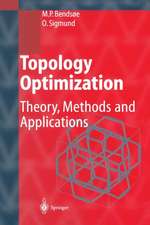Reliability is a New Science: Gnedenko Was Right
Autor Paolo Rocchien Limba Engleză Hardback – 24 iul 2017
Boris Vladimirovich Gnedenko (1912 – 1995) was a Soviet mathematician who made significant contributions in various scientific areas. His name is especially associated with studies of dependability, for which he is often recognized as the 'father' of reliability theory. In the last few decades, this area has expanded in new directions such as safety, security, risk analysis and other fields, yet the book ‘Mathematical Methods in Reliability Theory’ written by Gnedenko with Alexander Soloviev and Yuri Bélyaev still towers as a pillar of the reliability sector’s configuration and identity.
The present book proceeds in the direction opened by the cultural project of the Russian authors; in particular it identifies different trends in the hazard rate functions by means of deductive logic and demonstrations. Further, it arrives at multiple results by means of the entropy function, an original mathematical tool in the reliability domain. As such, it will greatly benefit all specialists in the field who are interested in unconventional solutions.
| Toate formatele și edițiile | Preț | Express |
|---|---|---|
| Paperback (1) | 495.65 lei 38-44 zile | |
| Springer International Publishing – 2 aug 2018 | 495.65 lei 38-44 zile | |
| Hardback (1) | 583.93 lei 43-57 zile | |
| Springer International Publishing – 24 iul 2017 | 583.93 lei 43-57 zile |
Preț: 583.93 lei
Preț vechi: 686.97 lei
-15% Nou
Puncte Express: 876
Preț estimativ în valută:
111.75€ • 116.00$ • 93.18£
111.75€ • 116.00$ • 93.18£
Carte tipărită la comandă
Livrare economică 24 martie-07 aprilie
Preluare comenzi: 021 569.72.76
Specificații
ISBN-13: 9783319574714
ISBN-10: 331957471X
Pagini: 152
Ilustrații: XV, 152 p. 50 illus.
Dimensiuni: 155 x 235 x 17 mm
Greutate: 0.42 kg
Ediția:1st ed. 2017
Editura: Springer International Publishing
Colecția Springer
Locul publicării:Cham, Switzerland
ISBN-10: 331957471X
Pagini: 152
Ilustrații: XV, 152 p. 50 illus.
Dimensiuni: 155 x 235 x 17 mm
Greutate: 0.42 kg
Ediția:1st ed. 2017
Editura: Springer International Publishing
Colecția Springer
Locul publicării:Cham, Switzerland
Cuprins
1 Background and Motivation. - 2 Old and Novel Tools for the Calculus of the Hazard Rate.- 3 How Systems Break Down. - 4 Constant Decline.- 5 Random Factors.- 6 Accelerated Decline.- 7 When the Premises are Untrue.- 8 Ideal Hazard Rate 9. Properties of Repairable Systems.- 10. Conclusive Remarks and Comments.- Appendix A History of Reliability in Literature.- Appendix B Two Sided Estimates of Rate Convergence in Limit Theorem for Minimums of Random Variables.- Appendix C Mortality Plateau.
Recenzii
“The book offers a surprising and elevated view on reliability theory. … We also find numerous significant examples and relevant numerical illustrations. A consistent set of bibliographic references concludes each chapter of the book. We think that the novel perspectives proposed by this work represent valuable contributions in the dynamic field of reliability theory.” (Eugen Paltanea, zbMATH 1381.60004, 2018)
Notă biografică
Prof. Paolo Rocchi has been recognized as an Emeritus Docent at IBM for his achievements, and is also an Adjunct Professor at Luiss University of Rome. He is still active in various areas of research, including information theory, probability theory, computer science education, and software engineering. Rocchi is no stranger to groundbreaking proposals, having authored over one hundred and thirty works including a dozen volumes.
Textul de pe ultima copertă
This work illustrates research conducted over a ten-year timespan and addresses a fundamental issue in reliability theory. This still appears to be an empirically disorganized field and the book suggests employing a deductive base in order to evolve reliability as a science. The study is in line with the fundamental work by Gnedenko.
Boris Vladimirovich Gnedenko (1912 – 1995) was a Soviet mathematician who made significant contributions in various scientific areas. His name is especially associated with studies of dependability, for which he is often recognized as the 'father' of reliability theory. In the last few decades, this area has expanded in new directions such as safety, security, risk analysis and other fields, yet the book ‘Mathematical Methods in Reliability Theory’ written by Gnedenko with Alexander Soloviev and Yuri Bélyaev still towers as a pillar of the reliability sector’s configuration and identity.
The present book proceeds in the direction opened by the cultural project of the Russian authors; in particular it identifies different trends in the hazard rate functions by means of deductive logic and demonstrations. Further, it arrives at multiple results by means of the entropy function, an original mathematical tool in the reliability domain. As such, it will greatly benefit all specialists in the field who are interested in unconventional solutions.
Boris Vladimirovich Gnedenko (1912 – 1995) was a Soviet mathematician who made significant contributions in various scientific areas. His name is especially associated with studies of dependability, for which he is often recognized as the 'father' of reliability theory. In the last few decades, this area has expanded in new directions such as safety, security, risk analysis and other fields, yet the book ‘Mathematical Methods in Reliability Theory’ written by Gnedenko with Alexander Soloviev and Yuri Bélyaev still towers as a pillar of the reliability sector’s configuration and identity.
The present book proceeds in the direction opened by the cultural project of the Russian authors; in particular it identifies different trends in the hazard rate functions by means of deductive logic and demonstrations. Further, it arrives at multiple results by means of the entropy function, an original mathematical tool in the reliability domain. As such, it will greatly benefit all specialists in the field who are interested in unconventional solutions.
Caracteristici
Offers the profile of reliability as a science in line with Gnedenko’s work Provides a new approach to key problems emerging in engineering, insurance, biology and even philosophy Stimulates new theoretical and empirical research efforts in the reliability domain Includes supplementary material: sn.pub/extras Includes supplementary material: sn.pub/extras












